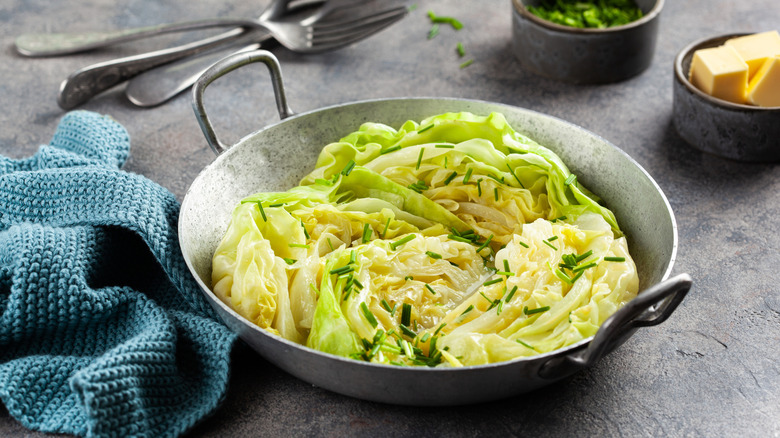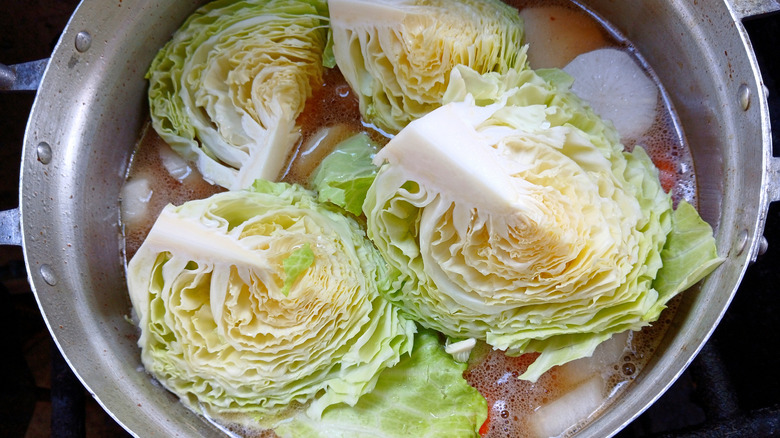The Best Way To Cook Flavorful Cabbage Is Also One Of The Easiest
Cabbage has been grown and eaten for thousands of years. It's the main ingredient in many old school dishes like cabbage rolls, cabbage casserole, and the Irish dish colcannon. In modern times, some enjoy using it as a low-carb alternative to traditional pizza crust. Despite all of the different ways to prepare it, the Auguste Escoffier School of Culinary Arts instructor Adele Ledet certainly has a preference. "Braising, a slow method of cooking, allows time for the cabbage to soak up flavor," she explained.
"The texture of cabbage is hard, crunchy, and fibrous," she continued. "By using a combination heat method, like braising, the tough leaves of cabbage could be broken down into tender leaves, making it easier to absorb flavor." Braising cabbage is a simple, two-step process in which cabbage is first seared then simmered in liquid. "This combination drastically alters the texture and flavor of cabbage," she said. It's one we employ in our butter-braised cabbage fettuccine recipe.
Braising cabbage
Before braising cabbage, prep the cabbage by discarding wilted leaves and rinsing off dirt, then pat it dry and chop it. The first step of cooking involves heating fat. Common ingredients include bacon and sausage, which are fried first. Then come the aromatics and spices. As Adele Ledet advised, "Cook the spices to bloom, then add the cabbage in layers, not to overcrowd the pot." If it sticks, deglaze the pot with vinegar or a hearty bone broth.
When finished cooking, taste it. Cover the pot before simmering until soft, which may take an hour or two. Cabbage can also be braised in the oven after it's been sauteed and the liquid has been added. Ledet suggested an additional optional step for the oven method: "If additional browning is needed, set oven temperature to 425 degrees Fahrenheit for 10 to 15 minutes or until desired brownness is achieved."

